






InUrSkn is more than just a skin a hair and body clinic. It is Dr. Sejal's promise of providing minimal intervention patient care which is holistic, personalized and humane.












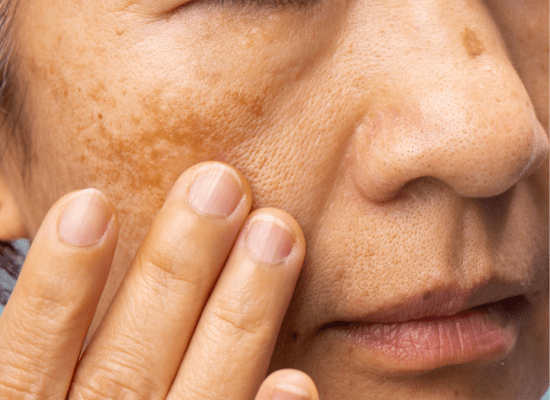
Skin sensitivity arises from various factors like aging, sun exposure, pollution, and lifestyle choices including smoking and drinking. Over time, infections and allergies may cause skin trauma, leading to uneven skin tone characterized by varied pigmentation levels, resulting in marks and blemishes. This renders a dull, patchy, and uneven appearance, reflecting the strain these factors exert on skin cells and overall health.
Read More
Freckles are brown flat spots commonly seen on sun-exposed areas like the face, neck, arms, and shoulders, especially in fair-skinned individuals. Lentigenes or Lentigines, larger than freckles and appearing on any body part at any age, result from increased melanin formation, often seen in light or fair-skinned individuals. Both mark the skin’s response to sunlight, differing primarily in size and melanin production, prevalent among lighter skin tones.
Read More
Melasma causes dark patches on your skin. These patches are generally seen on the face and are symmetrical. Typical melasma patches are seen on the cheeks, forehead, bridge of the nose and chin.
Read More
Spots and Marks on the skin of darker colour can be caused by a variety of issues like: Allergic reactions, Injury, Infections, rubbing action, picking on boils or pimples etc.
These are also called Post Inflammatory Hyperpigmentation or PIH in short. These can be really tiny spots the size of a pea or can be so large that they can be called patches.
Read More
A birthmark is some form of mark on or below the skin which is generally of a different colour or shade as compared to the surrounding area. These marks may be present at birth or appear shortly after birth. The basic reasons for most benign birthmarks are increase in melanin levels in a specific area or abnormal growth of blood vessels.
Read More
Tanned Skin or Darkened Skin is the symptom of exposure to the UV rays of the Sun. The skin becomes darker as the the skin generates more melanin in response to exposure to UV rays. Also as we age, the cumulative effects of UV exposure and hormones can cause an increase in melanin levels
Read More
Darkening of lips can occur due to various reasons including excessive sun exposure, smoking, caffeine consumption, and allergic reactions to cosmetic products or oral care items. Dehydration and lip-licking dermatitis can also lead to darkened lips. Sometimes, hormonal fluctuations and underlying health issues, such as vitamin deficiencies or liver disease, can play a role. It is essential to identify the cause to manage the condition appropriately.
Read More
Under-eye dark circles, also known as periorbital hyperpigmentation, are characterized by a darkening of the skin beneath the eyes. They can arise due to various factors including fatigue, aging, genetics, dehydration, and thinning skin. These circles may sometimes indicate underlying health issues or nutritional deficiencies.
Read More
Darkening of skin in areas like underarms, neck, and body folds often occurs due to friction, irritation, hormonal changes, obesity, or insulin resistance. It can be associated with metabolic syndromes and may require medical evaluation. Managing underlying conditions and maintaining proper hygiene can sometimes help in reducing the darkening.
Read More

Going to a dermatologist for pigmentation issues is essential for several reasons:
Expert Diagnosis: Dermatologists have the expertise to accurately diagnose the underlying causes of pigmentation issues, which might be multifactorial and complex.
Personalized Treatment Plans: Based on a detailed assessment of your skin type and the nature of your pigmentation, dermatologists can create personalized treatment plans that are more likely to yield positive results compared to one-size-fits-all solutions available over the counter.
Access to Advanced Treatments: Dermatologists have access to advanced treatments and technologies (like laser therapy, chemical peels, etc.) that can be more effective and faster in treating pigmentation issues compared to home remedies.
Prevention of Further Complications: Sometimes, pigmentation issues can be a sign of underlying health problems. A dermatologist can help identify such issues early on, helping to prevent further complications.
Safe Treatments: Undertaking treatments guided by a dermatologist ensures safety and minimizes the risk of adverse reactions to skin products or treatments.
Education and Advice: Apart from treatments, dermatologists can provide education on managing pigmentation issues and advice on preventing recurrence through lifestyle changes and skincare routines.
Remember, treating pigmentation issues can be a gradual process, and having a dermatologist guide you can sometimes be the most effective pathway to achieving healthier, clearer skin.


While there may be different types of pigmentation issues, below are some universal guidelines that help with pigmentation issues and overall skin health.
– Effects of sun exposure and even pollution are best minimized by use of sunscreens
– One should actively works towards improving their skin and overall health by getting adequate exercise, sleep and relaxation.
– One should also avoid damages to their health due to dietary choices or due to engaging in activities like smoking and drinking.
– Establishing a proper daytime and night time skin care routine with the help of your dermatologist which includes but is not limited to hydration, collagen generation and control of melanin formation can help substantially.
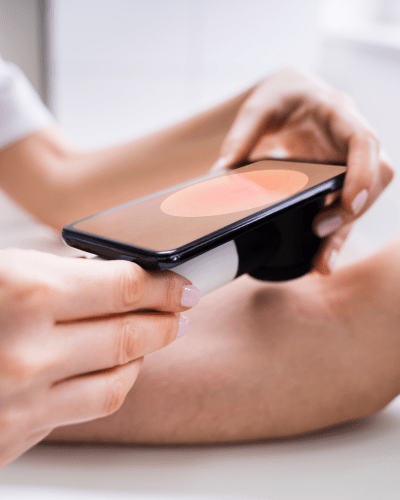
Genereal Treatment Protocol for any pigmentation related condition includes the below:
Assessment and Diagnosis
Prevention and Home Care
Topical Treatments
Procedures
Monitoring and Follow-up
Maintenance
The actual protocol can only be determined after an exact diagnosis of the type and extent of the condition.
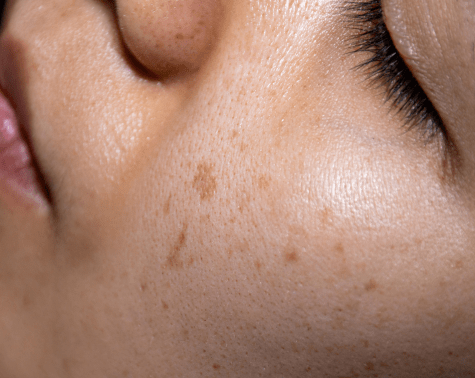
Your skin is sensitive to a variety of factors like ageing, sun exposure, pollution, lifestyle choices like smoking, drinking, lack of sleep etc. All these aspects create a strain on your skin cells and also on your body in general. Also over a period of time your skin may undergo trauma because of infections, allergies etc.
All of these aspects lead to an uneven skin tone that is characterized by marks and blemishes of varied pigmentation levels. This gives your skin a sickly, dull, patchy and uneven appearance.
Common factors that affect your skin tone and texture are as below:
Do’s:
Cleanse Regularly: Wash your face twice daily with a gentle cleanser to remove dirt and impurities.
Exfoliate: Use a mild exfoliator 2-3 times a week to remove dead skin cells and promote healthy skin turnover.
Sun Protection: Apply a broad-spectrum sunscreen daily to protect your skin from harmful UV rays, which can exacerbate blemishes and uneven skin tone.
Hydrate: Drink sufficient water and use a moisturizer suitable for your skin type to maintain skin hydration.
Healthy Diet: Eat a balanced diet rich in vitamins and antioxidants to nourish your skin from within.
Don’ts:
Avoid Picking: Don’t pick or squeeze blemishes as it can lead to scarring and infections.
Avoid Harsh Scrubs: Don’t use harsh scrubs as they can irritate the skin, leading to more blemishes and an uneven skin tone.
Skip Makeup Removal: Don’t sleep with makeup on; always remove it to prevent clogged pores and breakouts.
Overwashing: Don’t overwash your face as it can strip the skin of natural oils, leading to dryness and irritation.
Ignore Professional Advice: Don’t neglect professional advice. If home remedies don’t work, consult a dermatologist for targeted treatments.
Some points to help you prevent issues like skin blemishes are as follows:
1. Use a sunscreen every day before you step out.
2. Establish a proper skin care routine for your morning and evening with the advise of a dermatologist.
3. Never Pick on any skin lesions or growths, which can lead to pigmentation issues.
4. Never leave any skin ailment unattended, always speak to a dermatologist if you shows any symptoms on your skin.
5. Stick to a balanced diet that does not favour any specific food group or avoid any food group.
6. De-stress your mind and body, to prevent any conditions that can flare up because of stress.
7. Work on improving your sleep cycles.
8. Exercise your body regularly.
Yes, many over-the-counter products containing ingredients like salicylic acid, alpha hydroxy acids, and vitamin C can help in reducing blemishes and promoting an even skin tone. However, for best results, it is often recommended to consult with a dermatologist to find products suited for your specific skin type and concern.
Absolutely. Regular use of a broad-spectrum sunscreen with a high SPF can protect your skin from harmful UV rays, which can lead to blemishes and uneven skin tone over time. It helps in preventing further darkening of existing blemishes and in protecting the skin from premature aging.
To prevent blemishes and maintain an even skin tone, adhere to a balanced diet, keep yourself hydrated, and follow a regular skincare routine which includes cleansing, exfoliating, and moisturizing. Protect your skin from excessive sun exposure and avoid picking at your skin to prevent scars and blemishes.
While there are various claims of being able to treat such blemishes with home remedies, the results can greatly vary and sometimes these remedies can cause adverse reactions. It is best to treat any such issue under the guidance of a medical professional only.
Yes, hormonal fluctuations, especially during periods, pregnancy, or due to certain medications, can lead to increased oil production and subsequently result in blemishes and uneven skin tone. Hormonal acne tends to occur around the jawline and chin. If you suspect your blemishes are hormonally driven, it might be beneficial to consult with a healthcare provider for personalized advice and treatment. Keeping your skin clean, and using non-comedogenic products can help manage hormonal skin issues.
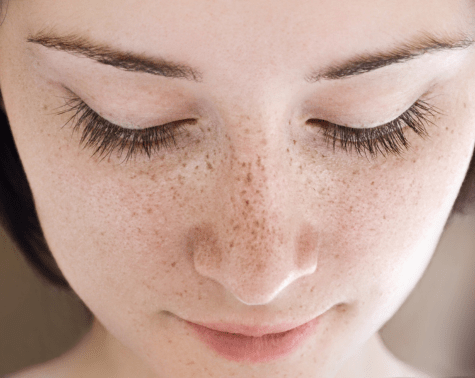
Freckles are brownish flat spots seen predominantly on face and also on other sun exposed areas like neck, arms, shoulders etc. It is commonly seen in fair skinned individuals.
Lentigenes or Lentigines are brownish spots larger than freckles seen on any part of the body and at any age. They occur primarily due to increased melanin formation.
These are generally seen in light skinned or fair skinned people.
Freckles are genetic in nature or they can be caused / aggravated by sun exposure. They are often found to be prominent in summer and subside during winter. Earliest occurrence of these conditions is seen in children from 5 years of age.
To prevent freckles, limit sun exposure especially between 10 a.m. and 4 p.m. when the UV rays are strongest. Consistently use a broad-spectrum sunscreen with a high SPF, and reapply every two hours when spending extended time outdoors. Wear protective clothing, such as wide-brimmed hats and sunglasses. Additionally, incorporate vitamin C in your skincare regimen for its antioxidant properties which can protect the skin from UV damage. It’s important to start sun protection early in life to prevent the formation of freckles and other signs of sun damage.
Do Use Sunscreen: Always use a broad-spectrum sunscreen with a high SPF to protect your skin from harmful UV rays, which are the primary cause of freckles.
Do Wear Protective Clothing: Wear hats, sunglasses, and long-sleeved garments to shield your skin from sun exposure.
Do Regular Skin Check-ups: If you have a propensity to develop freckles, regular skin check-ups can help in monitoring any skin changes and addressing them promptly.
Don’t Ignore Your Skin Type: If you have a fair complexion and you are prone to freckling, take extra precautions as your skin is more sensitive to the sun.
Don’t Use Tanning Beds: Avoid using tanning beds, as they can increase the risk of skin damage and the development of freckles.
Don’t Skip on Antioxidants: Don’t neglect the use of skincare products containing antioxidants like vitamin C, which help in protecting the skin from environmental damage and can potentially prevent freckle formation.
Freckles are generally harmless and not necessarily a sign of skin damage. However, they do indicate sun exposure, which can increase the risk of skin damage and skin cancer. It’s essential to protect your skin and to monitor any changes in your freckles.
Yes, if desired, freckles can be reduced or removed using various dermatological treatments such as laser therapy, cryotherapy, or chemical peels. It is essential to consult with a dermatologist to discuss the best option for you.
Freckles can fade naturally over time, especially when you limit sun exposure. During winter or with diligent sun protection, you may notice your freckles fading. However, they can reappear or darken with renewed sun exposure.
Yes, freckles are generally smaller, flat, and uniformly colored brown spots that appear mainly on sun-exposed areas. In contrast, moles are raised, can be larger, and may have a variety of colors, while age spots are larger, darker, and appear in older adults. However, if you’re unsure about any skin spot, it is always best to consult with a dermatologist to get a proper diagnosis.
While freckles themselves are not a sign of skin cancer, their presence can indicate significant sun exposure, which is a risk factor for skin cancer. It is vital to protect the skin from UV radiation and to monitor any changes in the size, shape, or color of freckles and other skin spots, as these changes can sometimes be indicators of skin cancer. If you notice any suspicious changes, you should consult a healthcare provider or a dermatologist.
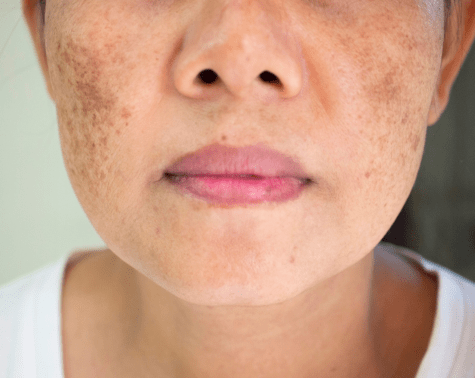
Melasma is a common skin condition where brown to gray-brown patches appear, usually on the face, due to an increase in melanin production. It often occurs during pregnancy or as a result of hormonal fluctuations, and can also be triggered by sun exposure. While it is generally harmless, many seek treatment for cosmetic reasons. Treatments can include topical lightening agents, chemical peels, and laser therapy, often combined with rigorous sun protection routines. It is more common in women and individuals with darker skin tones.
Melasma is primarily caused by an increase in melanin, the pigment that gives color to our skin. Here are the most common triggers and causes of melasma:
Sun Exposure: UV radiation from the sun can increase melanin production, leading to melasma.
Hormonal Fluctuations: Changes in hormone levels, often seen during pregnancy, menstruation, or due to the use of hormonal contraceptives and hormone replacement therapy, can trigger melasma.
Genetics: Individuals with a family history of melasma are more likely to develop the condition.
Skin Irritation: Skin products that irritate the skin can worsen melasma.
Medications and Treatments: Certain medications and treatments, including chemotherapy drugs, can induce melasma as a side effect.
Pregnancy: Often referred to as the “mask of pregnancy”, melasma is common in pregnant women due to hormonal changes.
Do Protect Your Skin from the Sun:
Use Sunscreen Religiously: Use a broad-spectrum sunscreen with an SPF of at least 30. Apply it even when it is cloudy or you are indoors, as UV rays can penetrate windows.
Wear Protective Clothing: If possible, wear wide-brimmed hats, sunglasses, and protective clothing to shield your skin from the sun.
Do Use Skin-Care Products Wisely:
Gentle Skincare Products: Use mild skincare products that do not irritate the skin.
Consult a Dermatologist: If you are uncertain about what products to use, consult a dermatologist to guide you on the best products for your skin type.
Do Maintain a Healthy Lifestyle:
Nutritious Diet: Maintain a diet rich in antioxidants and vitamins to support healthy skin.
Manage Stress: Stress can exacerbate melasma, so find ways to manage your stress levels effectively.
Don’t Skip Sunscreen:
Avoid Peak Sun Hours: Try to avoid going out during peak sun hours (10 am to 4 pm) to reduce exposure to harsh sun rays.
Don’t Rely Solely on Cosmetics: Cosmetics that claim to have SPF may not provide adequate protection, always use a dedicated sunscreen.
Don’t Use Harmful Skin Products:
Avoid Skin Irritants: Avoid products that are harsh and can irritate your skin, as irritation can worsen melasma.
No DIY Treatments: Avoid using home remedies or DIY treatments without consulting with a healthcare provider, as they might aggravate the condition.
Don’t Ignore Your Hormonal Health:
Consult Your Healthcare Provider: If you suspect your melasma is linked to hormonal fluctuations, such as those occurring during pregnancy or due to birth control pills, consult with your healthcare provider for appropriate management.
Don’t Self-Medicate: Avoid taking hormonal medications without the guidance of a healthcare provider, as this can potentially exacerbate melasma.
Melasma is not necessarily permanent, but it can be a chronic and recurring condition. Some individuals find that their melasma fades over time, especially with treatment and protective measures such as sun protection.
Melasma is generally not harmful, as it is primarily a cosmetic concern. However, it can sometimes be associated with other underlying issues such as hormonal imbalances. It is always advisable to consult a healthcare provider if you have concerns about melasma.
Yes, while melasma is more commonly seen in women, men can also develop the condition. It is estimated that about 10% of individuals who get melasma are men. Like in women, melasma in men is often associated with sun exposure, but the hormonal triggers might be less prominent.
Yes, while melasma most commonly appears on the face, it can also occur on other parts of the body that are frequently exposed to the sun, such as the neck and forearms. The patches tend to develop symmetrically, with matching spots on both sides of the body.
Pregnancy-induced melasma, also known as chloasma or the “mask of pregnancy,” often improves on its own after delivery. The hormone levels return to their pre-pregnancy state, which can lead to a decrease in the appearance of melasma. However, it may not completely disappear for all individuals, and some may choose to seek treatment to further reduce the appearance of the pigmentation. It’s also recommended to continue with sun protection measures to prevent any worsening of the pigmentation.
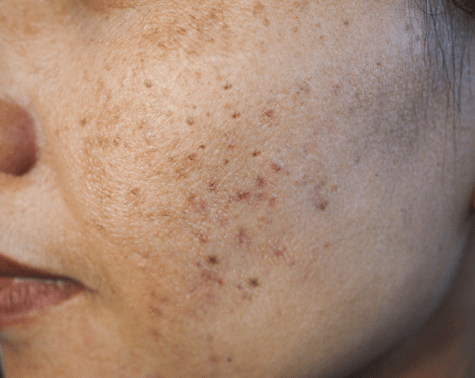
Spots and Marks on the skin of darker colour can be caused by a variety of issues like: Allergic reactions, Injury, Infections, rubbing action, picking on boils or pimples etc.
These are also called Post Inflammatory Hyperpigmentation or PIH in short. These can be really tiny spots the size of a pea or can be so large that they can be called patches.
Acne: One of the most common causes of PIH is acne lesions. The inflammation from acne can lead to increased melanin production, resulting in dark spots once the acne heals.
Injuries: Physical injuries to the skin, including scratches, cuts, and burns, can result in PIH as they heal.
Surgical Scars: After undergoing surgery, the scars left behind can sometimes darken, leading to PIH.
Allergic Reactions: Skin reactions to allergens can cause inflammation, and subsequently, hyperpigmentation once the inflammation resolves.
Inflammatory Skin Conditions: Conditions such as psoriasis, eczema, and lichen planus can potentially lead to PIH due to the inflammation they cause in the skin.
Insect Bites: Inflammatory responses to insect bites can also result in PIH once the bites heal.
Sunburn: Severe sunburn can lead to inflammation, and consequently, hyperpigmentation as the skin heals.
Hair Removal: Methods of hair removal, including waxing, shaving, and electrolysis, can sometimes cause irritation and inflammation, leading to PIH.
Do Protect Your Skin from the Sun
Use Sunscreen Daily: Apply a broad-spectrum sunscreen with an SPF of at least 30 daily to protect the skin and prevent PIH from worsening.
Wear Protective Clothing: In addition to sunscreen, wear hats, sunglasses, and long-sleeved clothing to shield your skin from harmful UV rays.
Do Use Appropriate Skincare Products
Incorporate Skin-Lightening Agents: Use skincare products containing ingredients known to lighten hyperpigmentation, such as hydroquinone, alpha arbutin, licorice extract, or vitamin C, under the guidance of a dermatologist.
Gentle Skincare: Use gentle, non-abrasive cleansers and moisturizers to avoid irritating the skin further.
Do Seek Professional Advice
Consult a Dermatologist: If over-the-counter treatments are not effective, consider seeing a dermatologist who can recommend more targeted treatments, such as chemical peels or laser therapy.
Personalized Skincare Routine: Establish a skincare routine based on professional advice to effectively manage PIH.
Don’t Pick or Scratch Your Skin
Avoid Irritating the Skin: Avoid picking at spots or scratching your skin, as this can exacerbate PIH.
Be Gentle: Be gentle when cleaning and caring for your skin to prevent aggravating PIH.
Don’t Use Harsh Skincare Products
Avoid Irritants: Avoid products containing alcohol, fragrances, and other irritants that can worsen PIH.
No DIY Treatments: Steer clear of DIY skincare remedies that may irritate the skin further and exacerbate PIH.
Don’t Ignore Early Signs of PIH
Early Intervention: Start treatment early, as soon as you notice signs of PIH, to potentially reduce the severity and duration of the condition.
Continuous Monitoring: Keep a close eye on your skin’s condition and consult a healthcare provider if you notice any signs of worsening or complications.
To prevent PIH, it is important to:
Avoid picking or scratching at the skin to reduce inflammation.
Use sunscreen to protect the skin from UV radiation, which can worsen PIH.
Use gentle skincare products to avoid irritating the skin.
PIH can fade over time, but the duration varies greatly depending on individual skin types and the severity of the hyperpigmentation. It might take anywhere from several months to a few years for PIH to resolve naturally. Implementing a skincare routine targeted at reducing hyperpigmentation can help speed up the process.
Yes, individuals of all skin types can develop PIH, but it is more common and often more noticeable in individuals with darker skin tones because they have more melanin in their skin.
No, PIH and melasma are not the same. While both involve hyperpigmentation, they have different causes. Melasma is often triggered by hormonal changes and sun exposure, whereas PIH is a response to inflammation or injury to the skin. Moreover, melasma often has a more diffuse pattern, while PIH usually follows the pattern of the injury or inflammation.
PIH is not necessarily permanent but it can be persistent, lingering for a considerable amount of time, even years in some cases. Early and appropriate intervention can help in reducing the appearance of PIH over time. Using targeted skincare products and protecting the skin from the sun can prevent PIH from worsening and support the healing process.
While diet is not directly linked to the development of PIH, maintaining a healthy diet rich in antioxidants and vitamins can support overall skin health. Foods rich in vitamin C, for instance, can aid in skin repair and might help in reducing the appearance of hyperpigmentation. Moreover, a balanced diet can help in preventing acne outbreaks, one of the primary causes of PIH. It’s always a good strategy to maintain a healthy diet to support your skin’s health and appearance.
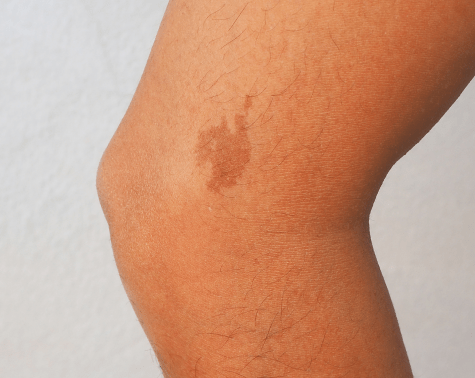
A birthmark is some form of mark on or below the skin which is generally of a different colour or shade as compared to the surrounding area. These marks may be present at birth or appear shortly after birth. The basic reasons for most benign birthmarks are increase in melanin levels in a specific area or abnormal growth of blood vessels.
Different Types of Pigmented Birthmarks:
a. Café Au Lait Spots
b. Congenital Nevi (at birth moles)
Different Types of Vascular (Blood Vessel) Birthmarks:
a. Hemangiomas
b. Port Wine Stains
c. Stork Bites
Most birthmarks are benign and in case your are worried about any specific birthmark it is best to speak to a dermatologist.
Pigmented birthmarks occur due to an overgrowth or clustering of pigment cells in the skin. The main types and their causes include:
Moles (Congenital Nevi)
Cause: These are caused by a clustering of pigment cells (melanocytes) in the skin. They can be present at birth or develop later in life.
Mongolian Spots
Cause: Predominantly seen in individuals with darker skin tones, these are caused by a concentration of pigment deep in the skin’s tissue.
Café-au-Lait Spots
Cause: These are light brown patches caused by an excess of melanin in a particular area of the skin.
Vascular birthmarks are caused by abnormal blood vessels in the skin. The main types of vascular birthmarks and their causes include:
Hemangiomas
Infantile Hemangiomas: These appear soon after birth and are caused by a collection of small blood vessels that form a lump in the skin. The exact cause is unknown, but it is believed to be due to a localized abnormal growth of blood vessels.
Port-Wine Stains
Cause: They are caused by the abnormal development of blood vessels, leading to a red or purple mark on the skin. The exact cause of this abnormal development remains unclear.
Salmon Patches (Stork Bites)
Cause: These are thin, flat, light pink patches often seen on babies at birth. They are caused by a grouping of blood vessels under the skin.
birthmarks are generally not preventable because they are typically caused by intrinsic factors such as the clustering of blood vessels or pigment cells, which occur spontaneously and are not influenced by external factors.
While there is no known way to prevent birthmarks, there are ways to manage and treat them, especially if they cause discomfort or other complications.
Yes, birthmarks are quite common and most people have at least one. They can vary greatly in size, shape, and color.
While many birthmarks are present at birth, some can appear weeks or months later.
Some birthmarks, particularly certain types of hemangiomas, may fade or shrink over time, typically during childhood, while others may remain throughout a person’s life.
Most birthmarks are not hereditary, although research indicates that a family history may increase the likelihood of having certain types of birthmarks.
While most birthmarks are harmless, some can be associated with other health issues. It is important to have any new or changing skin markings evaluated by a healthcare provider.
Yes, some birthmarks can be removed or reduced through treatments such as surgery or laser therapy, often for cosmetic reasons or to prevent complications.
Birthmarks are usually diagnosed through a physical examination. In some cases, a healthcare provider may use additional diagnostic tools, such as imaging tests, to evaluate the birthmark further.
Yes, treatments such as laser therapy can sometimes lighten pigmented birthmarks, although results can vary.
While it is uncommon, there have been instances where a birthmark reappears after removal, particularly if it was not completely removed during the initial treatment.
While most birthmarks are painless, some types of hemangiomas can cause discomfort, especially if they are located in areas of the body where they can rub against clothing or other surfaces.
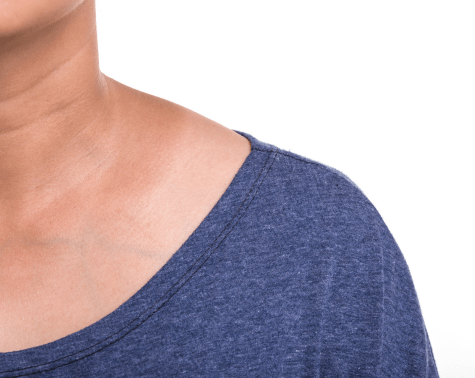
Tanned Skin or Darkened Skin is the symptom of exposure to the UV rays of the Sun. The skin becomes darker as the the skin generates more melanin in response to exposure to UV rays. Also as we age, the cumulative effects of UV exposure and hormones can cause an increase in melanin levels.
1. UV Radiation
Sun Exposure: Extended sun exposure increases melanin production, causing tanning.
Tanning Beds: These can also darken the skin due to UV radiation.
2. Hormonal Changes
Pregnancy: Can lead to skin darkening due to hormonal shifts.
Endocrine Disorders: Some disorders, like Addison’s disease, might cause skin darkening.
3. Inflammatory Response
PIH: Following an inflammatory skin condition, skin can darken.
Medications: Certain drugs can have skin darkening as a side effect.
4. Irritation & Friction
Chemicals/Allergens: Contact with irritants can darken the skin.
Physical Friction: Constant friction on the skin can lead to darkening.
5. Nutritional Deficiencies
Vitamins: Deficiencies, notably Vitamin B12, can sometimes cause skin darkening.
6. Aging
Cumulative Sun Exposure: Aging and long-term sun exposure can result in darker skin over time.
7. Genetics
Ethnic Background: Genetics and ethnic background can influence skin tone and its response to various factors.
8. Health Conditions
Liver Disease: Conditions like liver disease can sometimes affect skin color.
9. Smoking
Chemicals in Smoke: Smoking can darken the skin over time due to the chemicals in smoke.
Sun Protection
Sunscreen: Use a broad-spectrum sunscreen with a high SPF.
Clothing: Wear protective clothing, including hats and sunglasses.
Avoid Tanning Beds
Alternatives: Consider safer alternatives to tanning beds, like self-tanning products.
Nutritional Balance
Diet: Maintain a balanced diet to prevent deficiencies that might affect the skin.
Skin Care
Gentle Cleansing: Use mild skin cleansers to avoid irritation.
Moisturizing: Regularly moisturize the skin to maintain its health.
Hormonal Management
Medical Advice: If skin darkening occurs due to hormonal changes, seek medical advice for management options.
Quit Smoking
Assistance: Seek help to quit smoking, which can contribute to skin darkening.
Manage Health Conditions
Address underlying health conditions that might be causing skin darkening.
Yes, hormonal changes, such as those occurring during pregnancy or due to certain endocrine disorders, can lead to skin darkening or hyperpigmentation.
Yes, with age, skin can darken due to cumulative sun exposure over the years and changes in melanin production. Older individuals may notice uneven skin tone and hyperpigmentation.
Skin darkening can be temporary or permanent, depending on the cause. For instance, a tan from sun exposure may fade over time, while darkening due to hormonal changes might be more persistent. Treatments can sometimes lighten the skin.
Yes, chronic smoking can lead to skin darkening over time due to the effects of nicotine and other chemicals present in cigarettes on the skin.
Yes, some medications can cause skin darkening as a side effect, either through triggering an inflammatory response or through other mechanisms. It is advisable to consult with a healthcare provider if you notice skin darkening after starting a new medication.
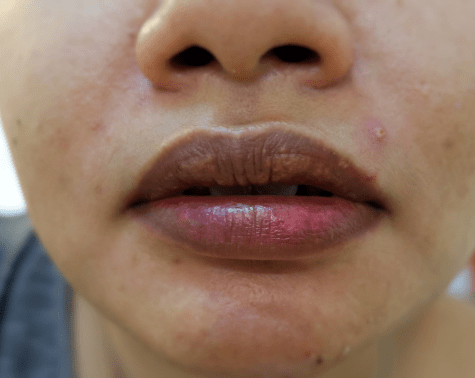
Darkening of lips can occur due to various reasons including excessive sun exposure, smoking, caffeine consumption, and allergic reactions to cosmetic products or oral care items. Dehydration and lip-licking dermatitis can also lead to darkened lips. Sometimes, hormonal fluctuations and underlying health issues, such as vitamin deficiencies or liver disease, can play a role. It is essential to identify the cause to manage the condition appropriately.
Dark Lips are caused by similar reasons as other pigmentation issues. The reasons for your dark lips may include:
-Smoking
– Chewing Tobacco
– Drinking Excess Coffee or Tea
These things consist of oxidative elements which not only darken the contact area like lips but affect the overall health of the skin.
– Sun Exposure
People think that sun exposure can cause darkening of the skin only, but it is a major factor in having darker lips also.
– Trauma to the lips because of drying, allergies or drug reactions on the lips
This can be a major reason for dark lips. People can react to lip colouring products or certain foods. Also there can be reactions to drugs which cause such effect.
Lastly and most importantly dry lips and the chapping of lips can also lead to darkening.
Best way to control or prevent darkening of lips is to use a lip balm with an SPF, this will ensure that the lips remain moisturized and protected from sun exposure and trauma.
Other things to consider in order to reduce or control lip darkening:
– If you are biting your lips or causing trauma in any manner, you should stop immediately.
– If you lips are drying and chaping regularly, a lip balm becomes even more necessary to prevent trauma.
– Consider reducing or eliminating smoking and consumption of tea, coffee and tobacco. These contain oxidative elements that cause darkening not just of contact areas like lips but overall skin.
Yes, dehydration can lead to dry and darkened lips. It is essential to keep yourself hydrated by drinking sufficient water to maintain the natural color of your lips.
To prevent your lips from darkening, avoid excessive sun exposure, and apply a lip balm with SPF. Quit smoking and limit caffeine intake. Moreover, maintain a healthy diet rich in vitamins and minerals to nourish your skin and lips.
Yes, depending on the cause, lip darkening can often be reversed or reduced. Treatments may include topical lightening creams, chemical peels, or laser therapy. It’s advised to consult a dermatologist for personalized treatment options.
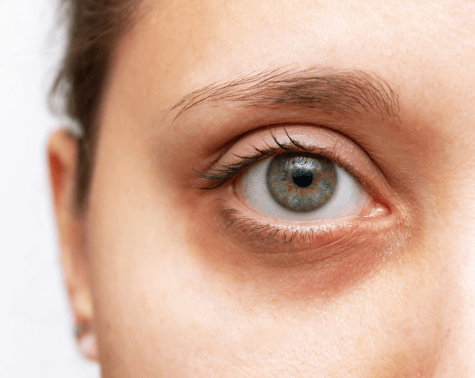
Under-eye dark circles, also known as periorbital hyperpigmentation, are characterized by a darkening of the skin beneath the eyes. They can arise due to various factors including fatigue, aging, genetics, dehydration, and thinning skin. These circles may sometimes indicate underlying health issues or nutritional deficiencies.
Under Eye Dark circles can be caused because of a variety of reasons. Some of the reasons are listed below:
– Genetic or hereditary: Dark circles tend to run in the family and can have a genetic basis.
– Sometimes because of constant rubbing or scratching during a bout of eczema or rashes or allergies around the eye area, pigmentation around the eye area can increase.
– Age reduces natural fat and collagen, which results in loss of elasticity of skin thus often leading to dark circles.
– Sometimes superficial blood vessels in this area combined with thin skin give a purplish hue.
– With age, the tear troughs (depression under the eyes) increases making the area appear almost hollow. This along with thin skin and loss of fat causes a shadow effect that feels like darkening or pigmentation under the eyes.
– Fluid accumulation around the eyes due to medical conditions or crying can also lead to pigmentation.
– UV rays from sun exposure cause tanning of all exposed areas, but the skin under the eye is thin gets affected the most.
– Certain eye drops can also cause pigmentation under the eye.
– Lack of sleep, stress, hormonal changes can also contribute to the darkening of the under-eye area.
– Excess smoking and alcohol use further aggravate underlying dark circles.
There are quite a few things that you can do and things you can avoid to prevent dark circles. Here’s a quick list of the same:
– Make sure to protect yourself from the sun with sunscreen and protection gear like sunglasses, scarves and hats.
– Get enough sleep.
– Avoid rubbing your eyes too often.
– Patients often try to scrub the pigmentation away. This in fact worsens the problem.
– If you must engage in smoking or alcohol consumption, minimize. The ideal quantity for these is always ‘0’
– Most importantly De-stress
– Please do not use home remedies and over the counter topical applications. In the best case they will not work, but in the worst case they will further increase the pigmentation. As an example, cucumber makes for a great salad ingredient and a terrible skin treatment.
Absolutely. Improving your sleep pattern, reducing alcohol and caffeine intake, and maintaining a balanced diet can potentially reduce the appearance of dark circles. Also, using screen filters and taking regular breaks from screen time can help.
Yes, staying hydrated can help maintain skin elasticity and may reduce the appearance of under-eye dark circles to some extent. Hydrated skin appears more plump and may help in reducing the shadow effect that often contributes to dark circles.
Yes, genetics can play a significant role in the development of under-eye dark circles. Individuals may inherit traits such as thinner skin or a predisposition to hyperpigmentation in the under-eye area, which makes dark circles more apparent.
Yes, regular physical activity can potentially reduce the appearance of under-eye dark circles. Exercise improves overall circulation, which can reduce puffiness and the appearance of dark circles. Moreover, engaging in activities that reduce stress can also have a beneficial effect on your skin, including the under-eye region. It is, however, important to note that the results can vary based on individual health and lifestyle factors.
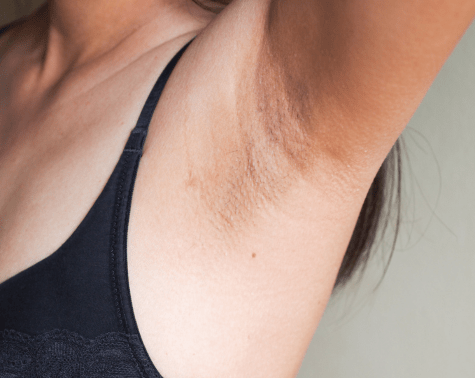
Darkening of skin in areas like underarms, neck, and body folds often occurs due to friction, irritation, hormonal changes, obesity, or insulin resistance. It can be associated with metabolic syndromes and may require medical evaluation. Managing underlying conditions and maintaining proper hygiene can sometimes help in reducing the darkening.
While darkening of underarms, neck etc. is also categorized as pigmentation. The underlying reasons for these issues may be different from the reasons for darkening of other areas.
One of the lead causes of this is a condition called acanthosis nigricans. It is condition that is largely genetic in nature and can flare up when there are disorders like obesity and diabetes.
These conditions can cause darkening and change in texture of the skin in the following areas:
– Under Arms or Armpits
– Groin Area
– Neck
– Elbow and Knee Folds (Elbow Pit or Knee Pit)
There can also be other reasons of localized darkening of these areas which may include the below:
-Genetic Predisposition
– Sudden Change in Hormones
– Obesity
– Hormone altering conditions like PCOS, hypothyroidism etc.
– Reactions or Allergies to drugs or topical applications.
– Repeated Rubbing of the area (like temples and forehead with a handkerchief)
In case the localized darkening of armpits, neck or groin is caused because of underlying conditions. It is best to work on resolving and controlling these conditions. In this case such darkening can also go away by itself.
In case the reason for localized pigmentation is rubbing or chafing or repeated trauma of any nature then the same should be avoided.
For a lot of patients reducing weight and establishing a healthy diet and lifestyle can yield great results in preventing and controlling these conditions.
Yes, weight loss can potentially help in reducing skin darkening in body folds as it decreases friction and sweating, which are two significant contributors to skin darkening in these areas.
Yes, frequent shaving can cause irritation and subsequently lead to darkening over time, especially in sensitive areas such as the underarms. To minimize this, you can try waxing or laser hair removal methods, which are known to be less irritating over the long term. Also, using a moisturizing shaving cream and a sharp razor can reduce irritation caused by shaving.
Yes, excessive sweating can contribute to darkening in the folds of the body as it can lead to friction and irritation, especially when combined with tight clothing. To manage this, maintain proper hygiene, wear breathable fabrics, and consider using an anti-fungal powder to reduce moisture and irritation in the affected areas.
While dietary changes alone might not directly lighten darkened skin folds, maintaining a balanced diet can improve your overall skin health. It is beneficial to consume foods rich in vitamins A, C, and E, and to stay hydrated. Moreover, a healthy diet can help in managing weight and preventing insulin resistance, which are associated with skin darkening. Consulting a healthcare provider for personalized advice can be beneficial.


MD, DNB - Dermatology & Venereology
Your pigmentation concern may be as individual as you. This requires a dermatologist who is trained to differentiate between the conditions to identify not just the exact type of pigmentation but also the treatment that will best work on the same.
Also while pigmentation of all types are largely treatable, some forms of pigmentation can be very stubborn. Dr. Sejal helps you set the correct expectations from the treatments in terms of results, time lines, risks etc. for your specific condition and only then begins treatment.
Also Dr. Sejal’s rich experience spread over 15 years and thousands of patients puts you in safe hands. Dr. Sejal truly believes in holistic treatments that work towards eliminating the root causes rather than the symptoms.
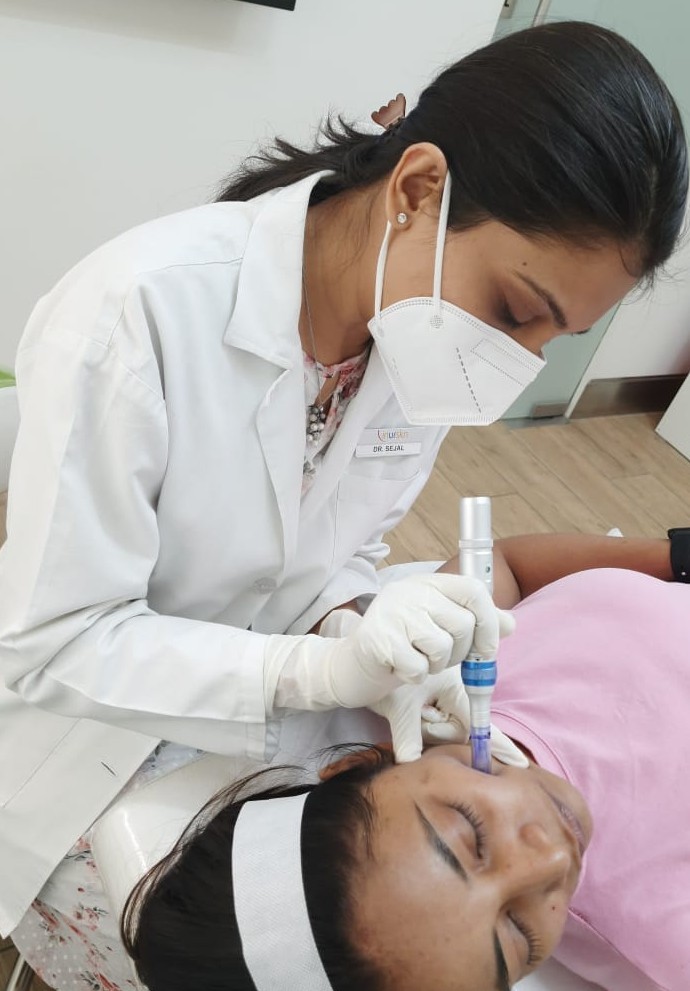
At InUrSkn, we believe that all patient care must be:
– Holistic
– Personalized
– Humane
– Minimal
Dr. Sejal and her team live by the philosophy of never prescribing medications or procedures that may not be required. When addressing a concern, Dr. Sejal ensures that a detailed history and context are thoroughly understood. Medical tests are prescribed by Dr. Sejal only when she believes there is more to the concern that needs to be addressed, ensuring the patient truly benefits.
Multiple spacious procedure rooms
Full-fledged operation theatre
In-house laboratory
Latest technology
100+ Skin, Hair & Body Procedures offered
Frequent disinfection of all clinic spaces with UVC light and WHO-approved chemicals
Large waiting and treatment areas to ensure social distancing
Regular health checks for all patients and staff
Safer than salons, chain-clinics & hospitals
PPEs for patients and staff
Personal attention from Dr. Sejal Saheta (MD, DNB) - with 15+ years of experience
CIDESCO-certified aestheticians with minimum 3 years work experience
500+ Positive Reviews on Practo and Google
5000+ Patients treated last year alone
8000+ Procedures completed
| Prices | ||
|---|---|---|
| Procedure | ||
| In Clinic Consultation with Dr. Sejal | ||
| In Clinic Consultation with Dr. Sejal | ₹1100 | |
| Online Consultation with Dr. Sejal | ||
| Online Consultation with Dr. Sejal | ₹900 | |
| ND Yag Laser Skin Rejuvenation - Package of 4 Sessions | ||
| ND Yag Laser Skin Rejuvenation - Package of 4 Sessions | ₹10000 | |
| 30 Day Skin Rejuvenation Package (7 Procedures + 3 Consultations) | ||
| 30 Day Skin Rejuvenation Package (7 Procedures + 3 Consultations) | ₹21000 | |
| Chemical Peel - 4 Session Package - Large Sized Body Area | ||
| Chemical Peel - 4 Session Package - Large Sized Body Area | ₹13500 | |
| Oxygen Facial - Package of 4 Sessions | ||
| Oxygen Facial - Package of 4 Sessions | ₹16000 | |
| Hydrafacial - Package of 4 Sessions | ||
| Hydrafacial - Package of 4 Sessions | ₹17000 | |
| Carbon Laser Peel - Package of 4 Sessions | ||
| Carbon Laser Peel - Package of 4 Sessions | ₹17000 | |
| Meso Ionization for Face - Package of 4 Sessions | ||
| Meso Ionization for Face - Package of 4 Sessions | ₹9000 | |
| Detanning Facial / Anti-Tan Facial | ||
| Detanning Facial / Anti-Tan Facial | ₹6000 | |
| Laser Spot Reduction - Medium Area - Single Session | ||
| Laser Spot Reduction - Medium Area - Single Session | ₹2000 | |
Pricing (Inclusive of taxes)


The most potent ingredient in skin products which reduce pigmentation are antioxidants. Vitamin C derivatives and glutathione are very good antioxidants and can help control melanin formation and migration and hence help improve your skin tone.
There exist no cures that can safely help you change the colour of your skin without affecting your health. Procedures such as skin bleaching or use of steroids can cause serious irreversible damage to the skin and should be avoided at all costs. The Best thing to do is to target getting a healthy evenly toned skin which improves your aesthetic appearance considerably.
There is a subtle difference between skin whitening and skin lightening. Skin whitening as explained is not possible without harm to the skin or substantial risks. Skin lightening on the other hand deals with reversal of tanning and helping cure marks, spots and blemishes on the skin to give a lighter, healthier appearance to the skin. This is very much possible and it works.
At home treatments controlling and reducing skin pigmentation can include using fruit, vegetable, herb extracts etc. However these are all untested and unproven methods and should be absolutely avoided in Dr. Sejal’s opinion.
OTC creams and drugs are often combination of a variety of active ingredients and may not work at all for your specific needs. In the worst case scenario these can cause serious reactions on the skin. Also some OTC products carry bleaching agents and steroids which can cause serious harm to the skin. Please do not start on any OTC without speaking to a dermatologist first.
The best way to help your skin tone is to work on your skin health by engaging in a balanced diet, regular exercise, ensuring adequate internal and topical hydration etc. Also one should avoid bad lifestyle choices like smoking, drinking etc. Lastly ensuring a proper skin care routine that provides you protection from sun, moisturizes your skin and also provides your skin certain topical nutrients can go a long way.
There are certain foods that contain antioxidants which help with maintaining your skin health. However these will have limited effect on the tone of your skin. Also topical applications that claim to be natural generally have a very small percentage of natural ingredients and actually work by use of pharmacological ingredients only. Hence it is best to speak to your dermatologist about the best way for lightening your skin tone.
Skin is often one of the first organs in the body to show signs of underlying health issues. In a variety of conditions like PCOS for women, or in psoriasis, eczema and other chronic conditions, skin often reflects the underlying systemic condition the earliest. Hence one should never ignore any symptoms like rashes or lesions on the skin and should immediately seek the help of a dermatologist.
Please remember most skin pigmentation is harmless and needs to be treated only for aesthetic purposes. Also the chance that patch of dark skin can mean a serious ailment like cancer is very low. It is best to discuss any concern you may have with your treating dermatologist.
You skin care routine should have the below basic items:
– A moisturizing and Hydrating Skin Care product
– A skin care product that is rich in antioxidants like vitamin c derivatives or glutathione etc.
– Should always have a sunscreen to protect your skin from tanning and any other damage.
– Besides this there are targeted serums that may be prescribed by your dermatologist to treat localized pigmentation and spots and marks like for undereye dark circles etc.


It is sometimes the small things in life that make the biggest difference. Dr. Sejal firmly believes in the concept of continuous imporvement be it in her practice or a patient's health.
Here you will find quick tips on all things related to skin, hair and body.
We at InUrSkn are cognizant that we need to constantly deliver value to our patients.Keep abreast of the latest offers at the clinic that are structured by Dr. Sejal to deliver the highest value and the best results.
With decades of experience behind her, Dr. Sejal often gets the opportunity to influence patients who may be seeking answers in the field of dermatology through the medium of magazines and dailies.
Here you will find some of Dr. Sejal's articles in teh most reputed publications.
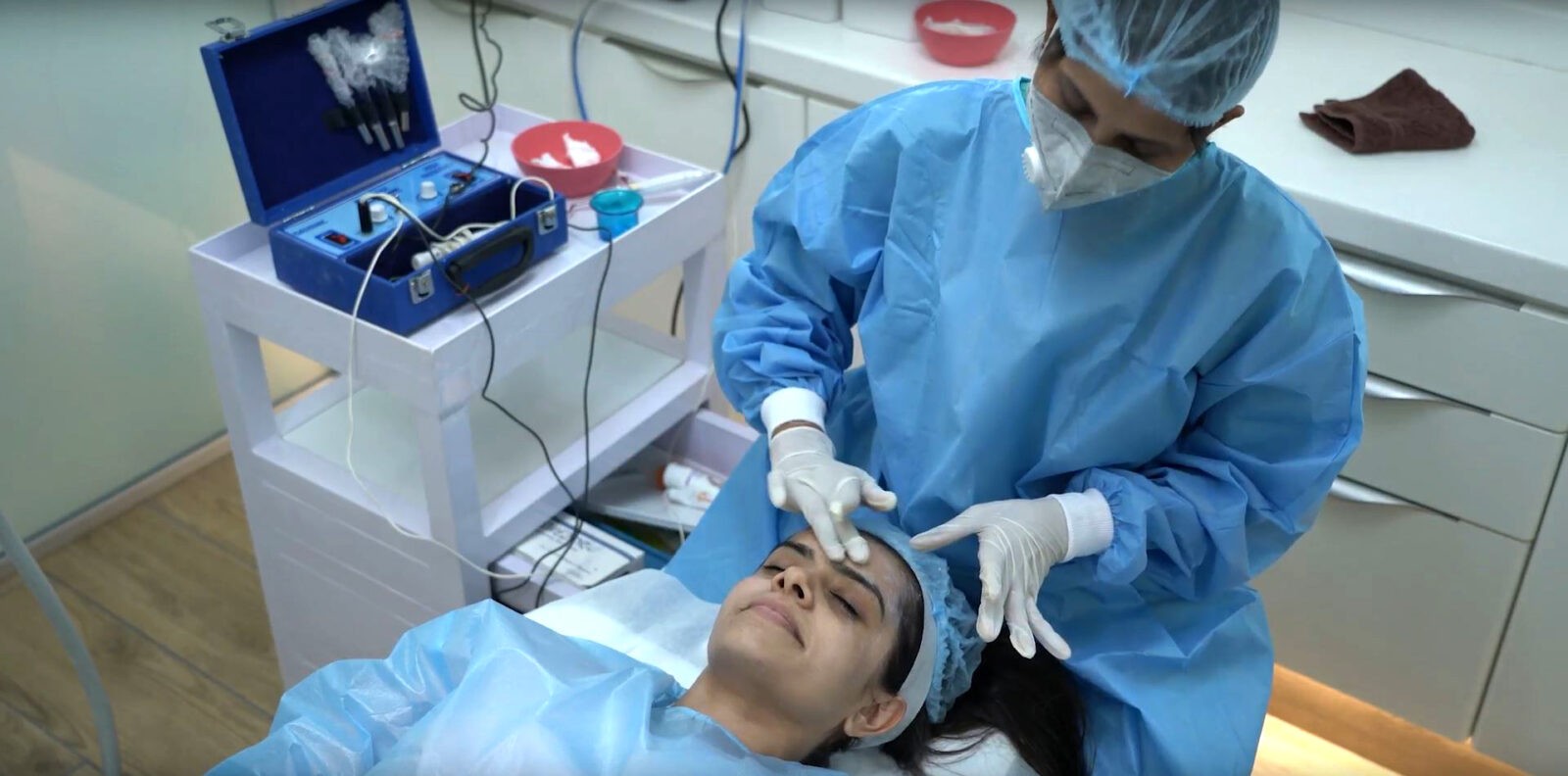
Ready to book an appointment?
BOOK
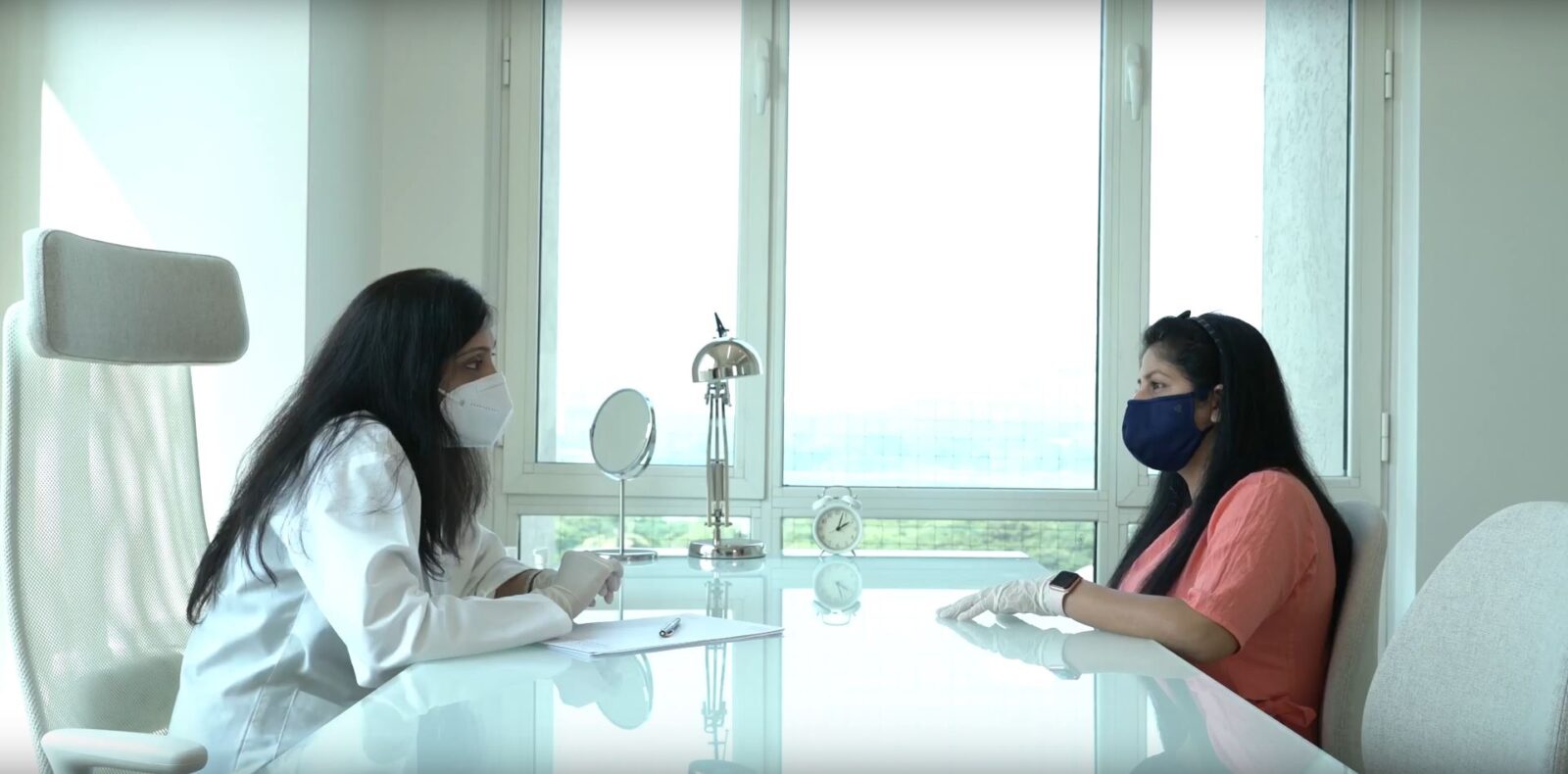
Want to talk about your needs ?
MAKE AN enquiry
